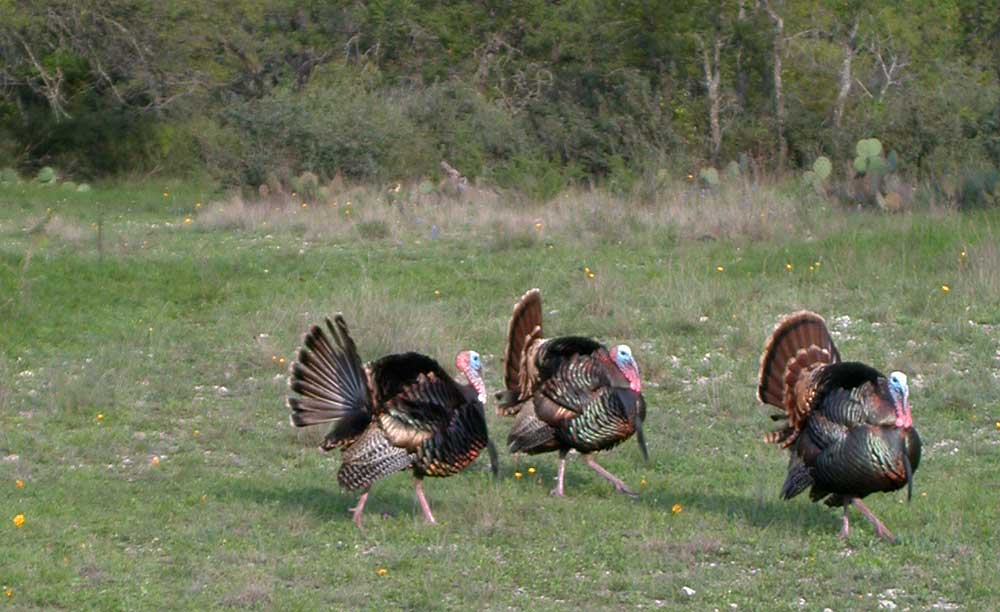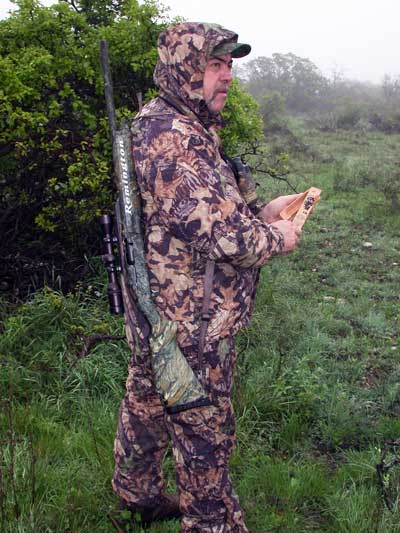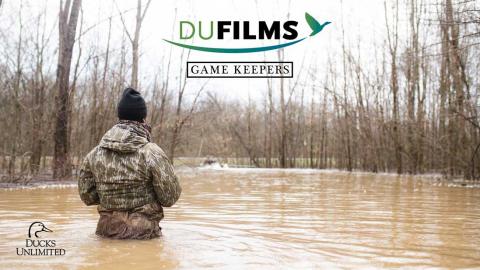provided by John Phillips
Ernie Calandrelli, from Buffalo, New York, enjoys all outdoor sports and has been turkey hunting for 44 years. Calandrelli retired a year or so ago from his positions of PR Director and Head of Advertising for Quaker Boy Calls after 34 years and is a longtime Mossy Oak enthusiast. Calandrelli has won or placed in the top 10 in over 100 turkey calling contests, including state, regional, U.S. and world championships. He’s hosted outdoor writers and Quaker Boy customers on turkey hunts all over the country in years past. Calandrelli has made so many friends in so many states that today he hunts as often as possible during spring gobbler season and deer season. Mossy Oak asked Calandrelli to name the wild turkeys that have taught him the most over the years.

When Quaker Boy Calls hunted in Texas, we primarily hunted on the Ford Ranch near Brady, Texas. We hunted that ranch almost every spring, and we even knew in which trees those Rio Grande toms had roosted. We didn’t want to spook the turkeys. We wanted them to return to the roost trees where they’d always roosted. We’d hunt 150 to 200 yards away from the roost tree. Many times, late in the evening, those turkeys would gobble really loudly, and you could take one of them. However, most of the time, the gobblers would gather up their hens and walk with the hens back to the roost trees. Rio Grande turkeys, unlike eastern turkeys, sometimes will roost in the same tree every night – 10 to 40 turkeys may be in the same big tree.
After several years of hunting this ranch, I learned that if you could get them gobbling to you on the way to the roost, you had a chance to take one. But if you started calling to them before they began gobbling, they wouldn’t come to you. Often then, the hens that were going to the roost would pull the gobblers around them, and you’d never see them. Therefore, we would listen to the toms gobbling on the way to the roost, find the trail they were taking on the way to the roost and set up just on the side of the trail. The hens then could pass by without seeing us, and the gobblers would be behind the hens. Usually I’d have to spend a couple of evenings learning the direction that the turkeys were most likely to take to roost. After that, I’d locate a spot to take a stand just off that trail and see the turkeys coming, possibly getting a shot off at the gobbler.
I’ve always felt that determining what a turkey will do before he knows what he’ll do and getting in a place to take him without calling to him is tough. The place that I was hunting on this Texas hunt was called the Badlands. Some guys even had t-shirts made up that they wore that said, “I survived the Badlands with Ernie Calandrelli.” This particular area of the Ford Ranch got its name because there were so many mosquitos, rattlesnakes, scorpions, ticks and other critters that would make your life miserable while you were waiting on a turkey to appear. The other problem was the best place to sit to take a turkey in the afternoon was out in the sun, and the temperature often would be from 80 - 100 degrees in the late afternoon. The people I was guiding would have to sit out in the sun to see the turkeys coming and get shots at them, while I’d sit behind them in the shade and do the calling.
 On one hunt, I was guiding a fellow who had one of those turkey chairs that you could sit in when you didn’t have a tree to lean against. He noticed a rat coming out of one of those holes, and there was a rattlesnake right behind the rat. The rat went right between his legs, and he jumped up and ran through the cactus to get away from that rattlesnake. This hunt was on the last evening that we were to hunt the Ford Ranch, and I had one fellow who had tagged out on his two turkeys. The hunter I was calling for needed one more turkey to have his Ford Ranch limit. The good thing about hunting the Badlands on this ranch was that only a very few trees were big enough for turkeys to roost in, so determining where they were going to roost was easy.
On one hunt, I was guiding a fellow who had one of those turkey chairs that you could sit in when you didn’t have a tree to lean against. He noticed a rat coming out of one of those holes, and there was a rattlesnake right behind the rat. The rat went right between his legs, and he jumped up and ran through the cactus to get away from that rattlesnake. This hunt was on the last evening that we were to hunt the Ford Ranch, and I had one fellow who had tagged out on his two turkeys. The hunter I was calling for needed one more turkey to have his Ford Ranch limit. The good thing about hunting the Badlands on this ranch was that only a very few trees were big enough for turkeys to roost in, so determining where they were going to roost was easy.
There was an open flat about 200 yards from the roost tree. I knew the turkeys had to come across this flat to get to the roost tree, so I knew the hunter would be able to see them coming and have plenty of time to take the shot. On this particular day, the wind was blowing, and the rain was coming down. We didn’t leave the ranch until an hour and a half before dark. We set up perfectly for my hunter to get the shot.
After he’d sat still for awhile, he whispered, “Aren’t you going to call?” I said, “No, these turkeys are going to come off the neighbor’s property, move across that flat and go toward the roost tree.”
Before long, I spotted four or five hens, and I told my hunter to get ready. I could see the tail feathers of several gobblers fanned out as they came onto the mesquite and then the flat. When they got to the flat, I saw that there were 10 longbearded gobblers. I told my hunter, “When those birds pass by you, shoot the last gobbler.”
Once the gobblers moved past the hunter, he held his shot and bagged the last tom. My hunter was an experienced turkey hunter, but he had never hunted Rio Grande turkeys. I was sitting right next to him on a giant live oak tree. When we picked up our turkey, the turkey was soaking wet, and so were we. That turkey looked like he’d been through a washing machine.
What I Learned from the Good Badlands Gobbler:
- The more you know about the land you hunt and the turkeys that live on that land, the better you can predict where the gobblers will be at certain times of the day.
- You can’t harvest a gobbler sitting in camp, so I didn’t hesitate to go out into the rain to help my hunter get the last bird on his two-bird limit.
- Success in turkey hunting depends on the four P’s of turkey hunting – pattern your gun, practice, patience and perseverance. When I first started hunting the Ford Ranch, Forrest Armke, the ranch manager, told me I’d be hunting the Double Wells Pasture. At home in New York, a pasture is 50 to 100 acres, so when I asked Forrest, “How big is this pasture?” without blinking an eye, he answered, “2000 acres.” I quickly learned that in different areas of the country, pastures aren’t the same size as they are in New York. The Ford Ranch is 33,500 acres, and that’s the reason why the pastures are so big. That’s why the four Ps are so important to turkey-hunting success.
- The different species of turkeys we have in this country all act somewhat differently. Even the same species of turkeys in various sections of the country act differently. However, to consistently take gobblers every season, the more you learn about the land you hunt and the turkeys that live on that land, the more consistent you can be harvesting your turkey every season.






























